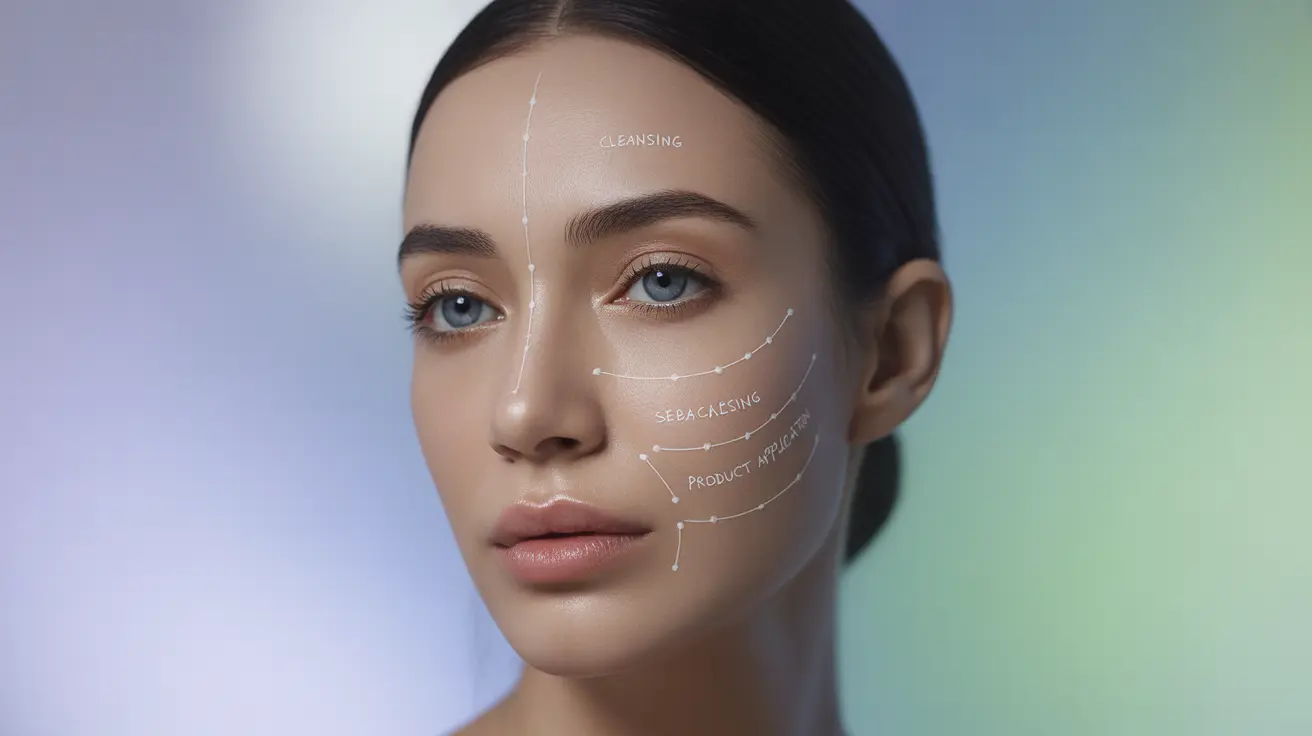The T-zone, comprising your forehead, nose, and chin, is one of the most challenging areas of facial skin care. This distinctive T-shaped region tends to be more prone to excess oil production, shininess, and breakouts compared to other parts of the face. Understanding how to properly care for your T-zone is essential for maintaining clear, healthy skin and a balanced complexion.
Whether you're dealing with occasional shine or persistent oiliness, developing an effective T-zone skincare routine can help you achieve better control over this troublesome area. This comprehensive guide will explore the causes of T-zone issues and provide practical solutions for managing them effectively.
Understanding Your T-Zone
The T-zone contains a higher concentration of sebaceous glands compared to other facial areas. These glands produce sebum, the natural oil that helps protect and moisturize your skin. While sebum is essential for healthy skin, excessive production can lead to various concerns, including enlarged pores, blackheads, and acne breakouts.
Several factors can influence T-zone oil production, including genetics, hormones, diet, and environmental conditions. Understanding these factors is crucial for developing an effective skincare strategy.
Essential T-Zone Skincare Steps
Proper Cleansing Techniques
The foundation of effective T-zone care starts with proper cleansing. Use a gentle, non-comedogenic cleanser that won't strip your skin of essential moisture. For combination skin types, you might need to adjust your cleansing routine to address both oily and dry areas effectively.
Targeted Treatment Approaches
After cleansing, focus on treatments specifically designed for oily skin concerns. Look for products containing ingredients like salicylic acid, niacinamide, or tea tree oil, which can help regulate oil production and prevent breakouts while maintaining skin health.
Product Selection and Application
Choosing the right products for your T-zone requires careful consideration of your skin type and specific concerns. Opt for oil-free or non-comedogenic products that won't clog your pores. Consider using different products for your T-zone versus the rest of your face if you have combination skin.
Daily Maintenance Tips
- Use a lightweight, oil-free moisturizer
- Apply sunscreen specifically formulated for oily skin
- Consider using mattifying primers or powders
- Keep blotting papers handy for touch-ups
Advanced Care Strategies
Beyond basic skincare, several advanced strategies can help manage T-zone concerns. Regular exfoliation (1-2 times per week) can help prevent pore blockages, while clay masks can help absorb excess oil and purify the skin. However, be careful not to over-treat the area, as this can lead to increased oil production.
Lifestyle Factors and Prevention
Managing your T-zone effectively also involves considering lifestyle factors. Maintain a healthy diet, stay hydrated, and avoid touching your face throughout the day. Pay attention to how different factors affect your skin's oil production and adjust your routine accordingly.
Frequently Asked Questions
What causes the T-zone on the face to be oilier than other areas?
The T-zone contains a higher concentration of sebaceous glands compared to other facial areas. These glands produce sebum (natural oil), and their increased presence, combined with hormonal factors and genetics, leads to more oil production in this region.
How can I effectively reduce shine and oiliness in my T-zone?
Use oil-free cleansers, incorporate products with oil-controlling ingredients like salicylic acid or niacinamide, and maintain a consistent skincare routine. Regular use of clay masks and gentle exfoliation can also help manage excess oil production.
What types of skincare products are best for managing an oily, acne-prone T-zone?
Look for non-comedogenic products containing ingredients like salicylic acid, benzoyl peroxide, or tea tree oil. Lightweight, gel-based moisturizers and oil-free sunscreens are ideal for maintaining protection without adding excess oil.
How often should I wash and exfoliate my T-zone to prevent breakouts without irritating my skin?
Wash your face twice daily with a gentle cleanser, and exfoliate 1-2 times per week. Over-washing or excessive exfoliation can irritate the skin and potentially increase oil production, so maintain a balanced approach.
Can using blotting papers or mattifying powders help control oil in the T-zone throughout the day?
Yes, blotting papers and mattifying powders are effective tools for managing excess oil throughout the day. They help absorb oil without disturbing your makeup or skincare products, providing a quick and convenient solution for shine control.




